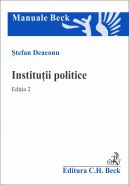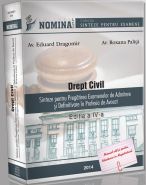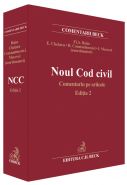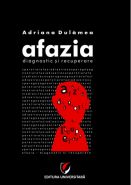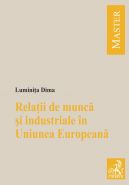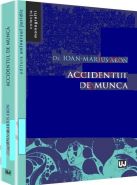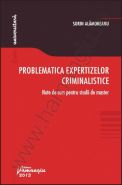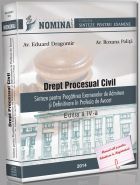- Code: 978-606-673-473-8
- Producator: Editura Universul Juridic
- Rating:
EXTRAS:
In order to be studied as a science, Law had to transit an intense process of specialization and consecration of values, values becoming thereby its object of study and specific research.
Throughout time, Law has been studied from various perspectives, because of its variable geometry, being considered in continuous transformation, with a social dynamics in ascension. Most specialists agree that Law is a complex phenomenon, with a synergistic, well-defined structure, which cannot be summarized in the exegesis of some legal norms or normative texts and precedents.
Therefore we ask ourselves whether the Theory of Fractals can argue the law’s character of being an exact science and implicitly natural on the one hand and, on the other hand, its nature of normative science.
§1. Introducere
ÎncƒÉ de la începutul secolului XX, un mare jurist, Rudolf Stammler, aprecia cƒÉ ≈ütiin»õa dreptului ar avea o structurƒÉ bazatƒÉ pe douƒÉ ramuri principale, ≈üi anume: una tehnicƒÉ, destinatƒÉ a studia sensul ≈üi cuprinsul legilor în alcƒÉtuirea lor sistematicƒÉ, ≈üi o ramurƒÉ teoreticƒÉ, ramurƒÉ ce trebuie sƒÉ constate dacƒÉ dreptul este mijlocul just pentru scopuri juste („acordul legilor cu idealul social”).
S-a afirmat cƒÉ, în mod natural, ≈ütiin»õa dreptului apar»õine sistemului ≈ütiin»õelor sociale, fapt demonstrat de obiectul dreptului ≈üi de o îndelungatƒÉ ≈üi neschimbatƒÉ percep»õie tradi»õionalƒÉ.
Este bine cunoscut cƒÉ, în tabloul ≈ütiin»õelor sociale, dreptul ocupƒÉ un loc deosebit de important ≈üi aparte, fiind determinat atât de scopul propriu, cât ≈üi de cel interdisciplinar care se aflƒÉ în strânsƒÉ legƒÉturƒÉ cu acesta ≈üi care ajutƒÉ la configurarea dimensiunii ≈üi structurii dreptului ca ≈ütiin»õƒÉ.
„Ca ≈ütiin»õƒÉ cu statut ≈üi pozi»õie specifice, ≈ütiin»õa dreptului analizeazƒÉ un anumit domeniu al rela»õiilor ≈üi al structurilor sociale – domeniul participƒÉrii oamenilor la circuitul juridic, ca purtƒÉtori de drepturi ≈üi obliga»õii juridice, cu toate consecin»õele ce decurg de aici”.
De-a lungul timpului, dreptul a fost studiat din varii perspective, astfel, putem concluziona cƒÉ dreptul reprezintƒÉ un fenomen complex, cu o geometrie variabilƒÉ, aflat într-o continuƒÉ metamorfozƒÉ ≈üi cu o dinamicƒÉ socialƒÉ în ascensiune.
(...)
Cuprins
ABREVIERI
DECRIPTAREA DREPTULUI CA ȘTIINȚĂ EXACTĂ NORMATIVISTĂ CU AJUTORUL FRACTALILOR (Nasty Marian Vlădoiu)
§1. Introducere
§2. Dreptul ca ≈ütiin»õƒÉ socialƒÉ
§3. Dreptul ca ≈ütiin»õƒÉ exactƒÉ normativistƒÉ
§4. Concluzii
THE DECRYPTION OF LAW AS AN EXACT NORMATIVE SCIENCE USING FRACTALS (Nasty Marian Vlădoiu)
§1. Introduction
§2. Law as a social science
§3. Law as an exact normative science
§4. Conclusions
REZILIENȚA EMOȚIONALĂ JUDICIARĂ (Nasty Marian Vlădoiu)
§1. Introducere
§2. Mijloace ≈üi metode
§3. Consecin»õe
§4. Concluzii
THE NEW CONCEPT OF JUDICIAL EMOTIONAL RESILIENCE (Nasty Marian Vlădoiu)
§1. Introduction
§2. Means and methods
§3. Results
§4. Conclusions
PRIVIRE ANALITICĂ ASUPRA MEDIULUI INFRACȚIONAL VIRTUAL (Nasty Marian Vlădoiu)
§1. Introducere
§2. Repere legislative române≈üti privitoare la infrac»õiuni sƒÉvâr≈üite în mediul virtual
§3. Protec»õia penalƒÉ a vie»õii private împotriva cyberinfrac»õiunilor. Nega»õionism, antisemitism, rasism ≈üi xenofobie în mediul virtual
§4. Concluzii
AN ANALYTICAL OVERVIEW ON THE VIRTUAL ENVIRONMENTAL CRIME (Nasty Marian Vlădoiu)
§1. Introduction
§2. Romanian legislative guidelines in respect of offenses committed in the virtual environment
§3. The criminal protection of privacy against cybercrimes. Negationism, anti-Semitism, racism and xenophobia in the virtual environment
§4. Conclusions
INVESTIGATORUL SUB ACOPERIRE ÎN VIZIUNEA NOULUI COD DE PROCEDURƒÇ PENALƒÇ (Isabelle VlƒÉdoiu, Nasty Marian VlƒÉdoiu)
§1. Utilizarea investigatorului sub acoperire sau cu identitate realƒÉ ≈üi a colaboratorilor
1.1. Dispozi»õii cu privire la condi»õiile necesare pentru a fi folosi»õi investigatori sub acoperire
1.2. Dispoziții cu privire la luarea măsurii şi actul prin care se dispune aceasta
1.3. Autorizarea unor măsuri de supraveghere tehnică
1.4. Condiții cu privire la persoana investigatorului. Competența şi activitatea investigatorilor sub acoperire
§2. Compara»õie atribu»õional-func»õionalƒÉ între investigatorul sub acoperire ≈üi colaborator
§3. MƒÉsuri de protec»õie a investigatorului sub acoperire ≈üi a colaboratorilor
§4. Participarea autorizatƒÉ la anumite activitƒÉ»õi
THE UNDERCOVER INVESTIGATOR IN THE VISION OF THE NEW ROMANIAN CRIMINAL PROCEDURE CODE (Isabelle Vlădoiu, Nasty Marian Vlădoiu)
§1. Introduction
§2. The use of undercover investigator or with real identity and of collaborators
2.1. Provisions regarding the necessary conditions for using undercover investigators
2.2. Provisions related to the taking of the measure and the document ordering it
2.3. The authorization of technical surveillance measures
2.4. Terms regarding the investigator person. Competence and undercover work
§3. Functional and attributional comparison between the undercover investigator and the collaborator
§4. Protective measures for the undercover investigators and collaborators
§5. The authorized participation to certain activities
§6. Conclusions
TRƒÇSƒÇTURILE ESEN»öIALE ALE INFRAC»öIUNII ÎN NOUL COD PENAL (Nasty Marian VlƒÉdoiu)
§1. Introducere
§2. Defini»õia infrac»õiunii
§3. FaptƒÉ prevƒÉzutƒÉ de legea penalƒÉ
§4. FaptƒÉ sƒÉvâr≈üitƒÉ cu vinovƒÉ»õie
§5. FaptƒÉ nejustificatƒÉ
§6. FaptƒÉ imputabilƒÉ persoanei care a sƒÉvâr≈üit-o
§7. Concluzii
THE ESSENTIAL FEATURES OF THE OFFENSE IN THE NEW ROMANIAN CRIMINAL CODE (Nasty Marian Vlădoiu)
§1. Introduction
§2. Definition of the offense
§3. Act provided by criminal law
§4. Act perpetrated with guilt
§5. Unjustified act
§6. Act imputable to the person who committed it
§7. Conclusions
THINK TANK OF JUSTICE AND LAW INFRACȚIUNEA DE UCIDERE LA CEREREA VICTIMEI INTRODUSĂ PRIN NOUL COD PENAL (Nasty Marian Vlădoiu)
§1. Considera»õii introductive. No»õiune ≈üi defini»õie
§2. Obiectul protec»õiei penale
§3. Subiec»õii infrac»õiunii
§4. Condi»õia premisƒÉ
§5. Con»õinutul constitutiv
§6. Forme, modalitƒÉ»õi, sanc»õiuni. Forme
§7. Explica»õii de interes practic
§8. Concluzii
THE OFFENSE OF HOMICIDE BY REQUEST OF THE VICTIM INTRODUCED BY THE NEW ROMANIAN CRIMINAL CODE (Nasty Marian Vlădoiu)
§1. Preliminary considerations. Concept and definition
§2. The object of the criminal offence
§3. Subjects of the criminal offence
§4. The prerequisite condition
§5. Constitutive contents
§6. Forms, modalities and penalties
§7. Explanations of practical interest
§8. Conclusions
INTEGRATORUL SOCIAL, SOLUȚIA PENTRU REABILITAREA MINORULUI PREDISPUS LA COMPORTAMENT INFRACȚIONAL (Nasty Marian Vlădoiu)
§1. Introducere
§2. Mijloace si metode
§3. Rezultate
§4. Concluzii
THE SOCIAL INTEGRATOR, A SOLUTION FOR THE REHABILITATION OF THE MINOR PREDISPOSED TO CRIMINAL BEHAVIOR (Nasty Marian Vlădoiu)
§1. Introduction
§2. Means and methods
§3. Results
§4. Conclusions
BIOINFRACȚIUNEA РUN NOU CONCEPT (Nasty Marian Vlădoiu)
§1. Introducere
§2. Bioetica – concept ≈üi evolu»õie în principalele instrumente juridice interna»õionale
§3. Conven»õia de la Oviedo
3.1. Izvor legislativ pentru legiuitorii na»õionali în materie
3.2. Câteva aspecte privind legisla»õia româneascƒÉ în materie
3.3. Defini»õia bioinfrac»õiunii
§4. Concluzii
BIOCRIME РA NEW CONCEPT (Nasty Marian Vlădoiu)
§1. Introduction
§2. Bioethics – evolution and concept in the main international legal instruments
§3. The Oviedo Convention
3.1. Legal source for national legislator
3.2. Several aspects regarding the romanian law in the field
3.3. Definition of Biocrime
§4. Conclusions
BIOETICA РADEVĂRUL DREPTULUI SAU DREPTUL ADEVĂRULUI? (Nasty Marian Vlădoiu)
§1. Introducere
§2. Biotehnologii. BiomedicinƒÉ. BioeticƒÉ
§3. Prevederi consacrate în instrumentele legislative interna»õionale adoptate în noul Cod civil român
§4. Concluzii
BIOETHICS РTRUTH OF LAW OR LAW OF TRUTH? (Nasty Marian Vlădoiu)
§1. Introduction
§2. Biotechnologies. Biomedicine. Bioethics
§3. Provisions established by international legal instruments adopted in the new Romanian Civil Code
§4. Conclusions
LIBERTĂȚI FUNDAMENTALE VERSUS COMANDAMENTE RELIGIOASE (Nasty Marian Vlădoiu)
§1. Introducere
§2. PrecizƒÉri terminologice
§3. Privire generalƒÉ asupra punctelor convergente ≈üi divergente
§4. Cadrul juridic privitor la libertatea religioasƒÉ în România
§5. Aprecieri privind comandamentele religioase ≈üi comandamentele juridice privitoare la drepturile omului. Aspecte
§6. Concluzii
FUNDAMENTAL FREEDOMS VERSUS RELIGIOUS COMMANDMENTS (Nasty Marian Vlădoiu)
§1. Introduction
§2. Terminology assignation
§3. Overview on convergent and divergent points
§4. Legal framework of the religious freedom in Romania
§5. Considerations concerning the religious commandments and legal commandments regarding human rights. Aspects
§6. Conclusions
ORDONAN»öA DE URGEN»öƒÇ NR. 31/ 2002 PRIVIND INTERZICEREA ORGANIZA»öIILOR »òI SIMBOLURILOR CU CARACTER FASCIST, RASIST SAU XENOFOB »òI A PROMOVƒÇRII CULTULUI PERSOANELOR VINOVATE DE SƒÇVÂR»òIREA UNOR INFRAC»öIUNI CONTRA PƒÇCII »òI OMENIRII, APROBATƒÇ PRIN LEGEA NR. 107/2006 – ÎN „AVARIE JURIDICƒÇ” (Nasty Marian VlƒÉdoiu)
§1. Introducere
§2. Probleme de legalitate
§3. Scurte comentarii ≈üi explica»õii privind articolele O.U.G. nr. 31/2002, confirmatƒÉ prin Legea nr. 107/2006, ≈üi ale propunerilor de lege ferenda
§4. Propunere de lege ferenda
§5. Concluzii
EMERGENCY ORDINANCE NO. 31/2002 PROHIBITING ORGANIZATIONS AND SYMBOLS OF FASCIST, RACIST OR XENOPHOBIC CHARACTER AND PROMOTING THE CULT OF PERSONS GUILTY OF CRIMES AGAINST PEACE AND HUMANITY APPROVED BY LAW NO. 107/2006 – „THE LEGAL DAMAGE” (Nasty Marian VlƒÉdoiu)
§1. Introduction
§2. Issues of legality
§3. Short comments and explanations of articles of GEO no. 31/2002, approved by Law no. 107/2006, and the ferenda law
§4. Proposal of ferenda Law
§5. Conclusions
LIBERTATEA DE RELIGIE DIN PERSPECTIVA CONVENȚIEI EUROPENE PENTRU APĂRAREA DREPTURILOR OMULUI ŞI A LIBERTĂȚILOR FUNDAMENTALE ŞI A JURISPRUDENȚEI CURȚII EUROPENE A DREPTURILOR OMULUI (Nasty Marian Vlădoiu, Ovidiu Predescu)
§1. Introducere
§2. Libertatea de religie. No»õiune. Reglementare
§3. Libertatea de religie. Concepte. Jurispruden»õa Cur»õii Europene în domeniu
§4. Obliga»õii substan»õiale ≈üi procedurale
§5. Concluzii
FREEDOM OF RELIGION FROM THE PERSPECTIVE OF THE EUROPEAN CONVENTION FOR THE PROTECTION OF HUMAN RIGHTS AND FUNDAMENTAL FREEDOMS AND CASE LAW OF THE EUROPEAN COURT OF HUMAN RIGHTS (Nasty Marian Vlădoiu, Ovidiu Predescu)
§1. Introduction
§2. Freedom of Religion. Concept. Regulation
§3. Freedom of Religion. Concepts. Relevant Case Law of the European Court
§4. Substantive and procedural obligations
§5. Conclusions
| Titlul cartii: | Think tank of justice and law | Autor: Nasty Marian Vladoiu |
|---|---|
| Numele autorului/lor: | Nasty Marian Vladoiu |
| Editura: | Universul Juridic |
| Data aparitiei: | Ianuarie 2015 |
| Numar de pagini: | 328 |
| ISBN: | 978-606-673-473-8 |
| Tip coperta: | Brosata |
| Pret intreg (Pretul de coperta afisat de producator): | 35 |
| Formatul de livrare: | Carte in format tiparit |

 Cosul de Cumparaturi
Cosul de Cumparaturi Yahoo Messenger
Yahoo Messenger


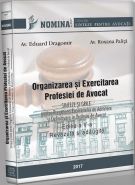
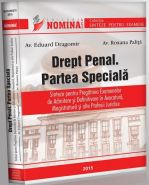
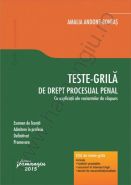
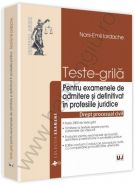
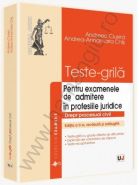
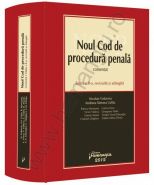


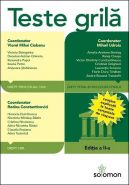
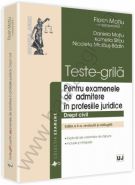
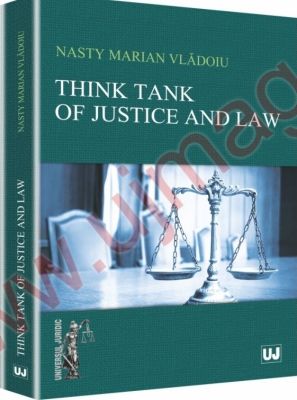




![Contracte speciale [Sinteze. Modele de contracte. Teste grila] | Autor: Tabaras Manuela](http://librariejuridica.ro/userfiles/productboximages/product_679.jpg)
